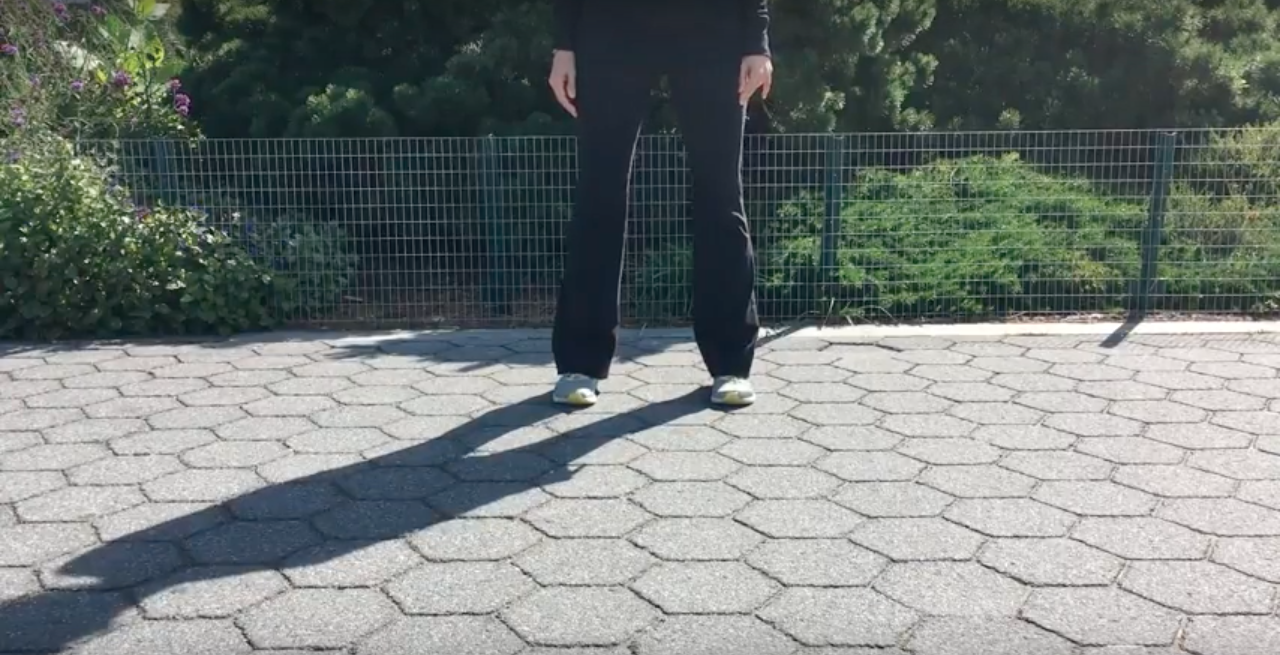Watch this baby learning how to walk, and see if you can you describe the physical logic behind how he waddles.
A good answer would be that he moves by shifting his weight from side to side, from leg to leg. This makes sense because it is the first and most basic component of a walk. He is only free to move one leg forward because his weight is balanced on the other leg.
In the coming year he will practice shifting his weight back and forth over and over again, refining his form with each step to the point where this shift becomes a subconscious habit, embedded deep within his muscle memory.
We all learned to walk (and perform a variety of other small, but important movements) in this way. However, the result of learning in this manner—what psychologists call “implicit” learning—is that it does not leave us with a conscious understanding of the process. When we decide to move forward, we don’t think, “Okay, I need to shift my weight to the side, and bring my free foot forward”. We just begin to walk.
For most people, this intuitive understanding serves them just fine for their entire life.
Those of us with Parkinson’s, however, no longer fully have this capacity. Our ability to move automatically is compromised because the diminished dopamine in our brains causes a cluster of neurons called the basal ganglia to malfunction. The basal ganglia normally play a central role in habitual movement, but when PD muddles neurological activity in this region of the brain, we lose the default mechanism that allows us to perform movements without thinking. Tasks we’ve repeated thousands of times become confusing and difficult.
But this does not mean we have to write off these lost physical skills! It only means we can no longer rely on subconscious processes to perform them. Instead, we need to acquire explicit, conscious knowledge of how to do particular movements. We need to understand their key elements, then execute them with awareness and intention.
When we are able to do this, we bypass the basal ganglia, and engage a healthier, still intact part of our brain, called the cortex, to help us activate our bodies.
The Principle in Action:
Unfreezing Your Gait
To give you a concrete example of this core principle in action, let’s look at how it can help deal with the common PD problem of freezing, or getting physically stuck while trying to move.
Most people try to overcome freezing by doing something that seems very reasonable. Since walking is a forward motion, the first thing they try to do is to go in that direction; they redouble their effort to push their legs ahead. But thinking about it in that way fails to understand the physical logic behind beginning a walk. As the baby taught us earlier, beginning to walk actually requires shifting your weight to the side onto one foot. Without this shift, your feet will remain stuck, with each leg still bearing 50% of your body weight. In order to become unstuck, you need to shift to something like a 10-90% weight distribution before trying to move.
Check out the video below to see this shift of weight in action:
At first this may seem cumbersome. But with practice, moving consciously in this manner will become faster and easier.
Understanding the importance of shifting our weight helps us deal with (or avoid) freezing in situations when this problem is likely to arise. Take a look at me in the video below waiting to cross the street, for instance. Freezing of gait often occurs in time sensitive situations like this one, where we feel extra pressure to move. But I can avoid this problem by:
Mentally preparing to shift my weight to the side before the light changes
Shifting my weight side-to-side to begin my walk once the walk sign appears (almost like a penguin)
Once I get going, I find it much easier to continue. For people with freezing problems, initiating movement is almost always the hardest part. Not everyone will have to simulate a penguin walk, but they will have to mentally prepare to shift their weight, and execute when the moment comes.
Another (Short) Example
If you want to read about another example of this principle in action, you can check out PD Movement Lab‘s previous post on walking and stability.
In that post we looked at how people with PD may try to initiate a walk by leading strongly with their torso, a practice that can lead to a loss of control and, perhaps, balance. But by understanding another aspect of physical logic in walking – that leading with your feet allows your body to remain upright and your stride to lengthen – you can acquire an added stability and power as you move. As with freezing, knowing a basic mechanical principle can help counteract a disorder in movement.
Not a Full Restoration, But a Valuable Tool
Conscious movement that depends on understanding physical logic will not feel as smooth or easy as the automatic functioning we had prior to PD. Explicit movement guides like this one cannot fully substitute for the skills we have refined over a lifetime. But awareness of essential parts of a movement’s process can help us regain a large amount of mobility. And as you use your newfound understanding more and more to help you move, accessing and using these guides will become easier and easier. Like our charming toddler, we can progress with practice.
To leave a comment, follow these three steps: 1) Write your comment in the text box below, and click the "Post Comment" button 2) A black screen will appear. Write your name or "Anonymous" in the first text box 3) Click the gray "Comment As Guest" button. Voila! Thanks for your thoughts!
For a detailed visual guide to posting a comment visit PD Movement Lab Comment Directions
